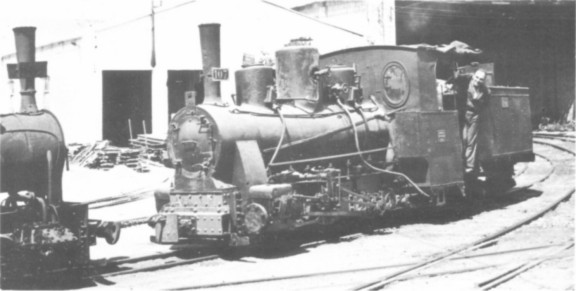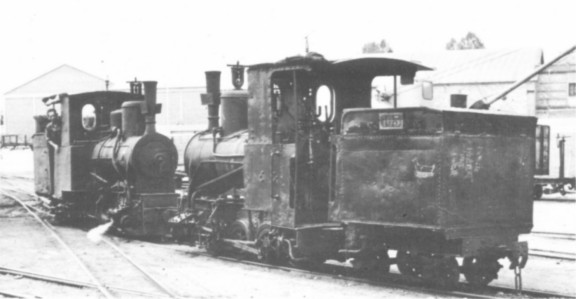
| THE INDUSTRIAL RAILWAY RECORD |
© FEBRUARY 1971 |
LA POVEDA SUGAR FACTORY
R. A. FOX
The Madrid sugar factory of the Ebro-Compañía de Azucares y Alcholes SA is not in the capital but some fifteen miles to the south-east in the village of La Poveda. This is near no place of importance and as a result public transport consists only of an infrequent bus service along the main road (N.111) from Madrid to Valencia. We travelled there by taxi. At the time of our visit (September 1965) the factory was at a standstill, and all the locos except one were in the multi-gauge shed. And what a collection! On the 5ft 6in gauge we found one Babcock & Wilcox (or? Maffei) 0-4-0 well tank, one vintage Beyer Peacock 4−4−0 side tank (partly cut-up), and two diesels which now do the work. The metre gauge had one Hawthorn Leslie 0−4−2 saddle tank, but the gems were the 60cm gauge machines − an Orenstein & Koppel 0−6−0, two O&K 0−8−0’s and a Maffei 0−8−0, an O&K 0−10−0, two Jung 0−6−0’s, and one 4−wheel petrol railcar made at the factory from an old Ford car. The 60cm gauge rolling stock is mainly ex−British War Department equipment from the First World War, and consists largely of bogie wagons for carrying sugar beet. A home-made wooden passenger coach was noted in the yard - it was mounted on two fixed four-wheel bogies! The 60cm line runs about fifteen miles south-east to connect with the RENFE Madrid-Aranjuez line at Ciempozuelos, but the metre gauge is but a short spur (almost disused) to the metre gauge Madrid-Aragon Railway. Most of the traffic is on the 5ft 6in branch running north-east for about ten miles to Torrejón de Ardoz on the RENFE Madrid-Barcelona line. Diesels are not always frowned upon and we travelled with the Deutz to Torrejón. As we waited for the Madrid train tentative plans were made for another visit some day, but in November when the locomotives are at work. That would be a journey worth making !

The 5ft 6in gauge Beyer Peacock (293 of 1863) in April 1961. (F. Jones)

Although of the same wheel arrangement as 102, 107 shows several differences, not the least being the outside frames and Stephenson link motion. (R. A. Fox)

Two of the 0−6−0 tender engines. 102 (on the left) and 103 are Jung 605 and 606 of 1902, although carrying A. Koppel plates. (R. A. Fox)